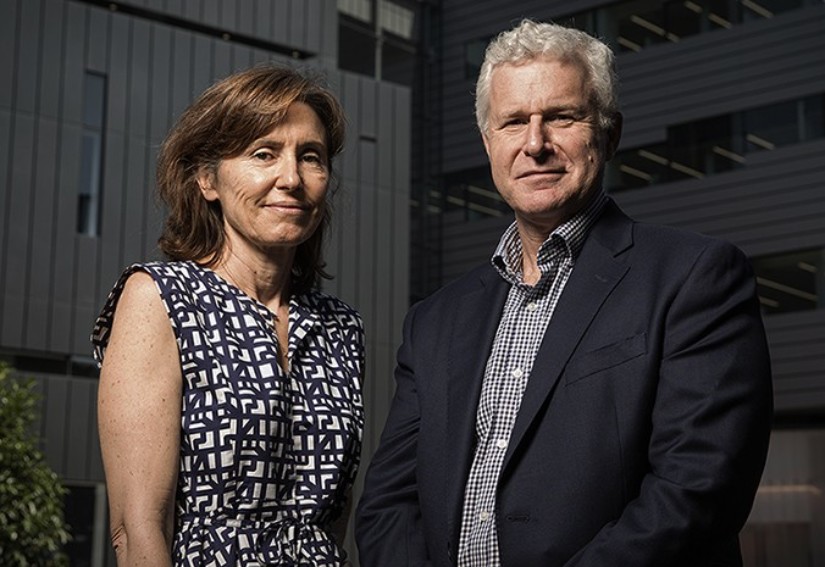Identifying Mutations in Cancer Cells to Predict Metastasis in Skin Cancer
29 January 2020
News

Professor Marie Ranson and A/Prof. Bruce Ashford have been funded by the NHMRC to work on a project to identify specific mutations in cancer cells which could be used to more reliably predict metastasis in skin cancer.
The 3-year NHMRC Ideas Grant entitled: “Cutaneous Squamous Cell Carcinoma (cSCC): defining Prognostic Markers of Metastasis” builds on the previous research by Ranson and Ashford who have spent 5 years investigating the progression of the disease, which is considered the most common lethal malignancy in Australia and a major healthcare burden.
“Our aim is to decipher the genetic and molecular changes that distinguish those cancers that will progress and cause death from those that will behave in a less aggressive way.” Said A/Prof. Ashford.
Australia has the highest rate of cSCC in the world. Despite this, compared to melanoma, there has been far less research undertaken to understand the behaviour of this far more common cancer. Doctors have noted an overwhelming number of cases where the patients are often unable to seek a diagnosis or treatment because it is too late and because of their geographical isolation.
Using tissue samples collected from patients treated in the Illawarra, this work will use the capability of equipment and scientists from UOW and the Illawarra Health and Medical Research Institute (IHMRI).
“What we hope to achieve in the short term is a world-first genome-wide map of mutations in cSCC, to understand how the disease progresses at the molecular level. Understanding this will be key to developing a major shift in the current diagnosis and treatment of metastases which involves a combination of radical surgery (usually of the head and neck) and radiation treatment – profoundly reducing a patient’s quality of life.” Said Prof Ranson.
The research team aims to identify and validate biomarkers of progression. This advance would allow all tumours treated anywhere in the world to be assessed for their risk of entering the lymphatic system, the first step in the cancers spread.
“All tumours that are removed (or biopsied) from a patient will be screened for their metastatic potential level. A low potential would involve the patient being routinely monitored for changes, while a high metastatic potential would require regular (3 monthly) ultrasound surveillance of at risk lymph nodes. This is a radical shift from the watch and wait approach currently in place and will have an immediate impact on the 500,000 people affected by cSCC each year in Australia.” Said Prof Ranson.
Work already completed in their research program has identified possible mechanisms for drug treatment using immunotherapy.
“As one of the most costly of any cancers in the Australian health system ($720M in 2015), cSCC is overrepresented in our community and a grossly understudied disease. So we were very happy to receive this grant from the NHMRC to help address such an insidious disease.” Said Dr Ashford.
The researchers who are also affiliated with UOW’s Illawarra Health and Medical Research Institute (IHMRI), are collaborating with A/Professor Ruta Gupta (Royal Prince Alfred Hospital) and A/Professor Gopalakrishna Iyer (National Cancer Centre, Singapore) on the project, as well as working with Wollongong hospital staff, surgeons and Illawarra Cancer Carers (ICC) members who have been instrumental in supporting this research with initial funding since 2015. Further acknowledgment for the work of Illawarra Cancer Carers (ICC) was noted during the annual Wollongong Australia Day Awards – where ICC was the recipient of the City of Wollongong Community Group Award for 2020, for their unwavering support for cancer patients in the Illawarra.
Resources already established with Ranson’s and Ashford’s previous work includes the Beyond Five website: Australia’s only dedicated head and neck cancer education and support website for patients and caregivers, established by Dr Ashford and an Associate Investigator on the NHMRC grant Professor Jonathan Clark. The name reflects the concept that patients must live with effects of cancer treatment beyond the point of cure (the 5 year mark).
This article is republished with permission. View the original article here.